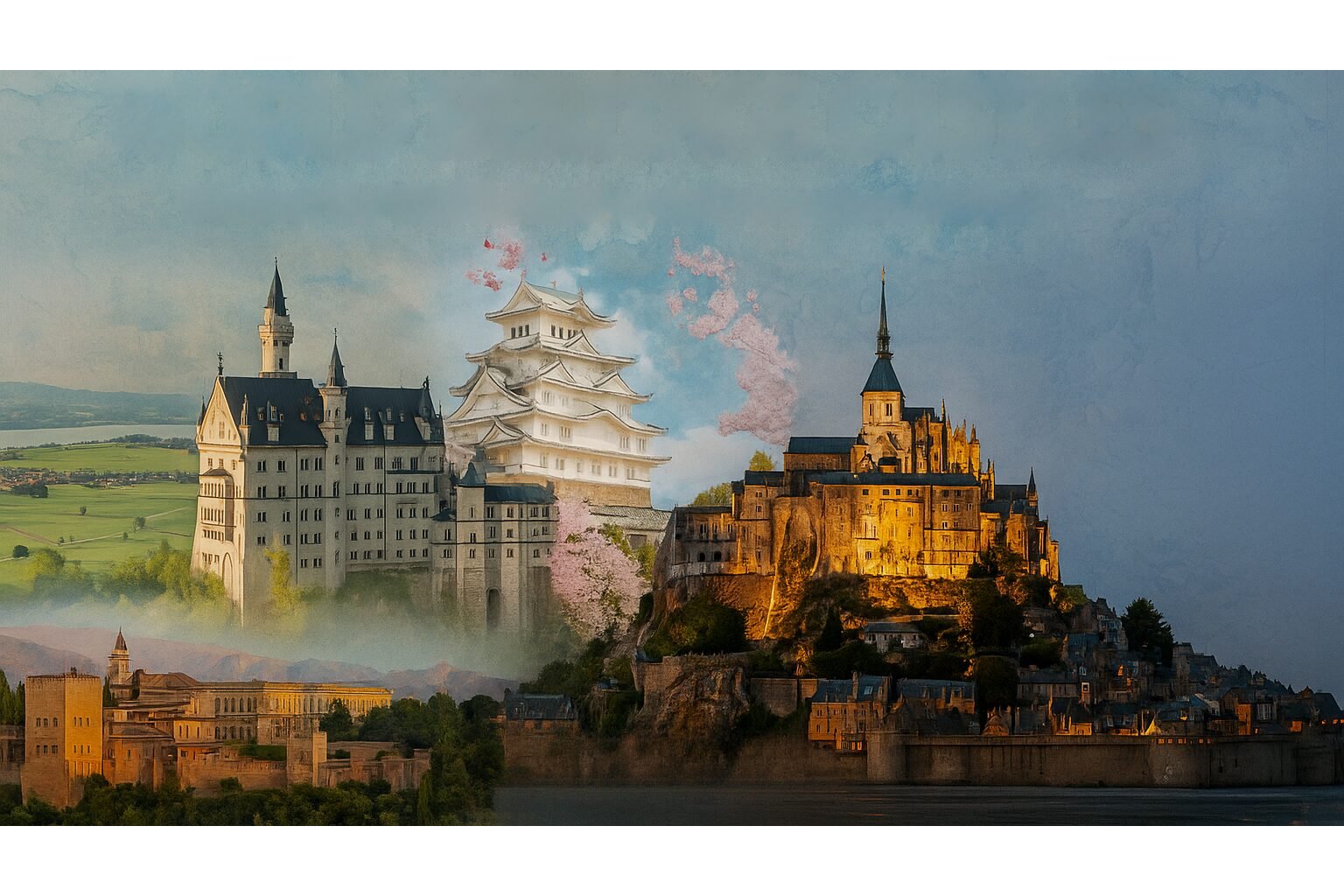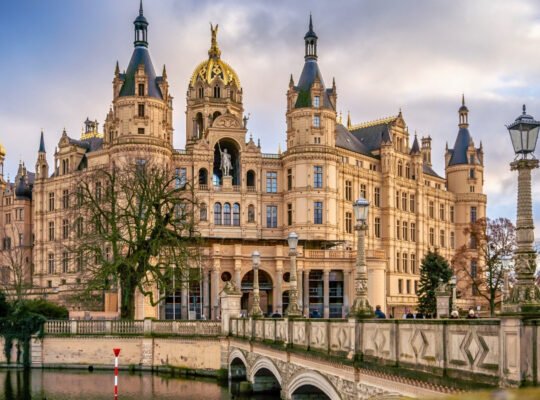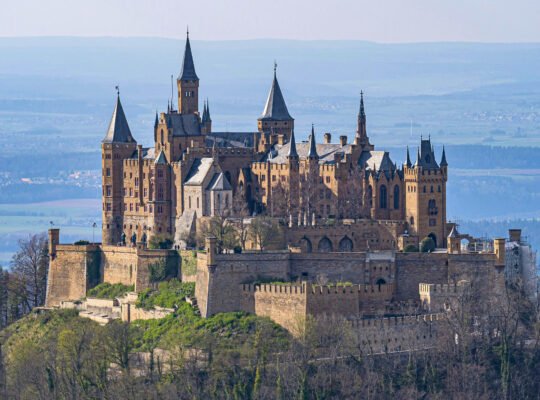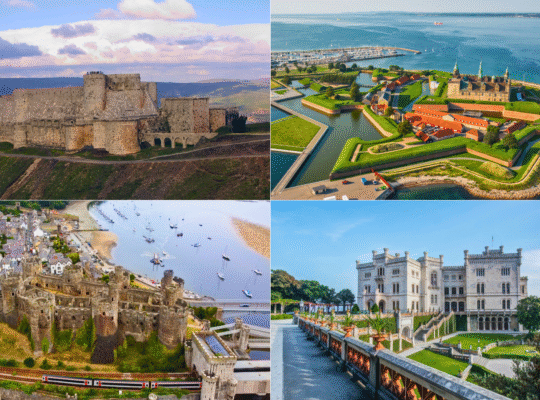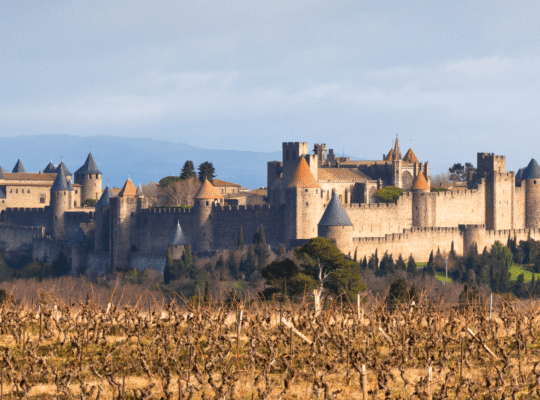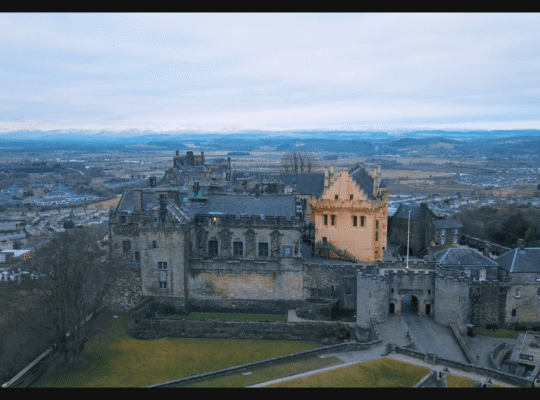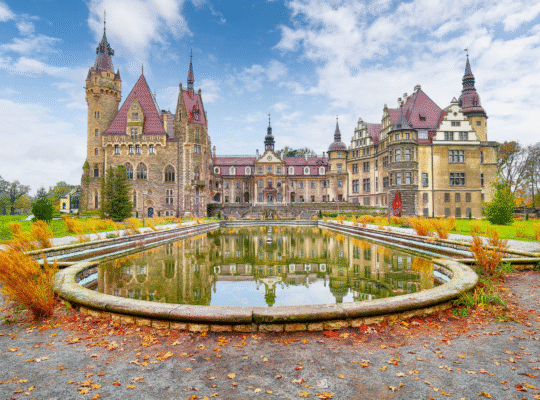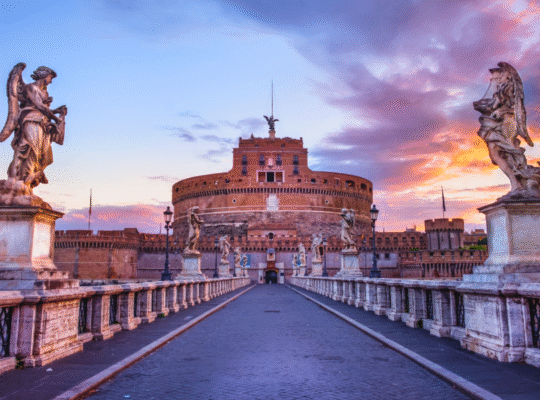There’s something magnetic about castles. Maybe it’s the way their towers slice through morning mist, or how their walls whisper stories of kings, queens, and the countless souls who walked their halls. Across continents and centuries, castles have stood as living testaments to power, artistry, and endurance. And when UNESCO steps in to protect these fortresses, it’s not just about preserving stone and mortar — it’s about safeguarding the spirit of human history.
From the snow-covered peaks of Bavaria to the tropical coasts of the Caribbean, these UNESCO World Heritage Castles aren’t just buildings — they’re time machines. Each one opens a window into the world’s past, where empires rose, cultures intertwined, and imagination shaped stone. You can almost hear the echo of footsteps in Prague Castle’s courtyards, smell the ocean air at San Juan’s ramparts, or marvel at the golden light that wraps around Blenheim Palace.
UNESCO’s mission is simple yet profound: to protect sites of “outstanding universal value.” For travelers, that means these castles are not only breathtaking but also invaluable pieces of our shared heritage. Whether you’re chasing fairytale towers, Moorish mosaics, or Mughal marble, each of these sites captures a chapter of human brilliance.
So, pack your curiosity and a camera — here are 20 UNESCO-listed castles that deserve a place on every traveler’s list. Each one will pull you into its story — and make you wish you never had to leave.

Top 20 UNESCO World Heritage Castles
1. Neuschwanstein Castle (Germany)
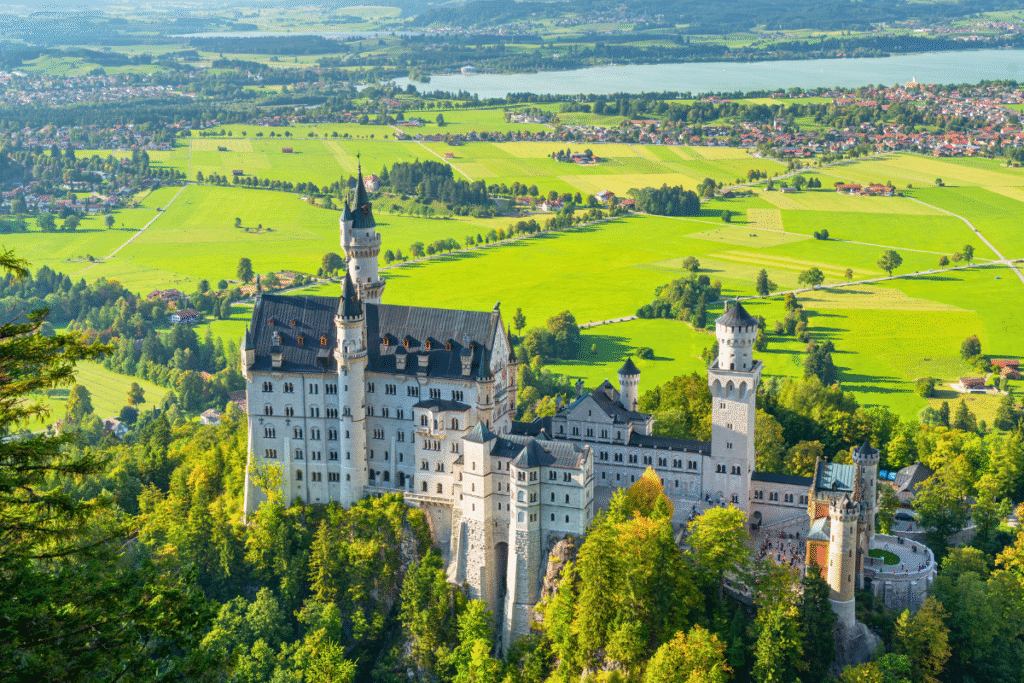
📍 Bavaria, Germany
🕰️ 19th century
Few places capture the fairytale spirit quite like Neuschwanstein. Perched high above the Bavarian Alps, this dreamlike fortress was commissioned by King Ludwig II — the “Fairy Tale King” — as his personal retreat and homage to medieval legend. Its soaring towers and romantic silhouette inspired Walt Disney’s Sleeping Beauty Castle, and standing before it, you’ll understand why.
✨ Why it’s special: Though built in the 1800s, Neuschwanstein reflects a nostalgic love for the Middle Ages rather than true medieval history. Its fusion of fantasy and craftsmanship earned it a place among the world’s most famous UNESCO heritage sites, symbolizing Europe’s Romantic era.
🧭 Travel Tip: Visit in early autumn when the surrounding forests blaze with color. Book tickets in advance — entry slots sell out fast — and don’t miss the Marienbrücke bridge for the perfect panoramic photo.
💬 Want to dive deeper? Explore the full story of this fairytale fortress — its legends, hidden rooms, and King Ludwig II’s grand vision — in our complete guide: Neuschwanstein Castle, Germany.
2. Himeji Castle (Japan)
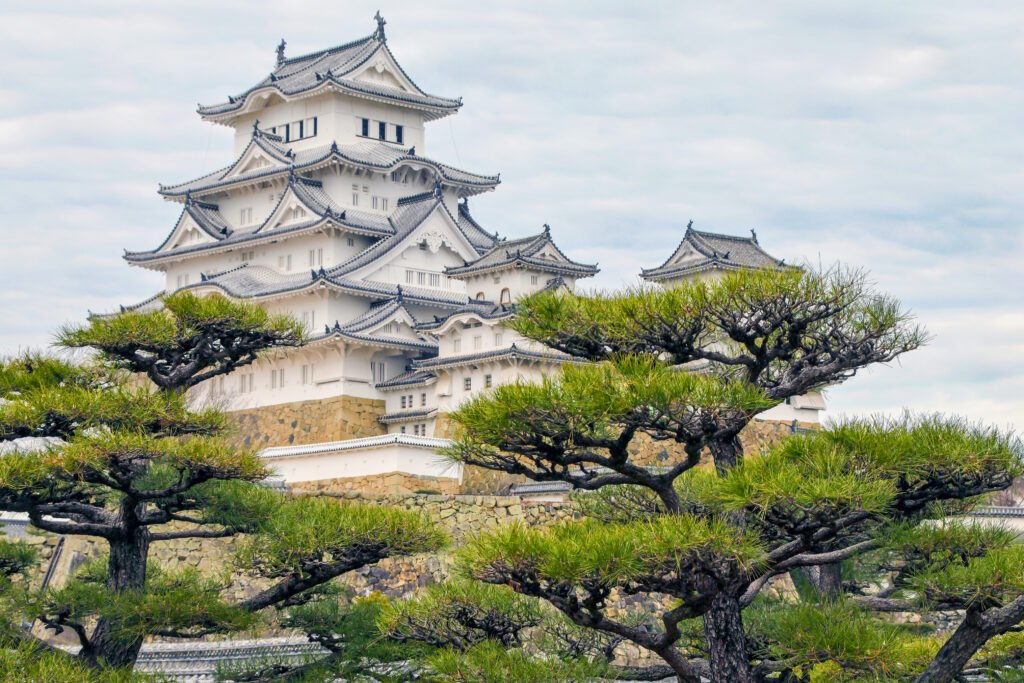
📍 Himeji, Hyōgo Prefecture
🕰️ 14th–17th centuries
Himeji Castle, or Shirasagi-jō (“White Heron Castle”), is Japan’s most beautiful and best-preserved feudal fortress. Its white plastered walls and layered roofs resemble a heron taking flight, gracefully perched above the city of Himeji. Unlike many Japanese castles destroyed during war, Himeji survived centuries of earthquakes and bombings — a miracle of resilience.
✨ Why it’s special: Himeji’s intricate defensive design — twisting paths, hidden gates, and layered keeps — exemplifies Japanese ingenuity. As Japan’s first UNESCO-listed castle, it stands as a national treasure and symbol of endurance.
🧭 Travel Tip: Arrive early in spring for the cherry blossom bloom; the contrast between white petals and white walls is pure magic. Wear socks — you’ll need to remove your shoes to explore inside.
💬 Planning a visit? Discover insider tips, local history, and the best photo spots in our full guide: Himeji Castle, Japan Travel Guide.
3. Blenheim Palace (England)
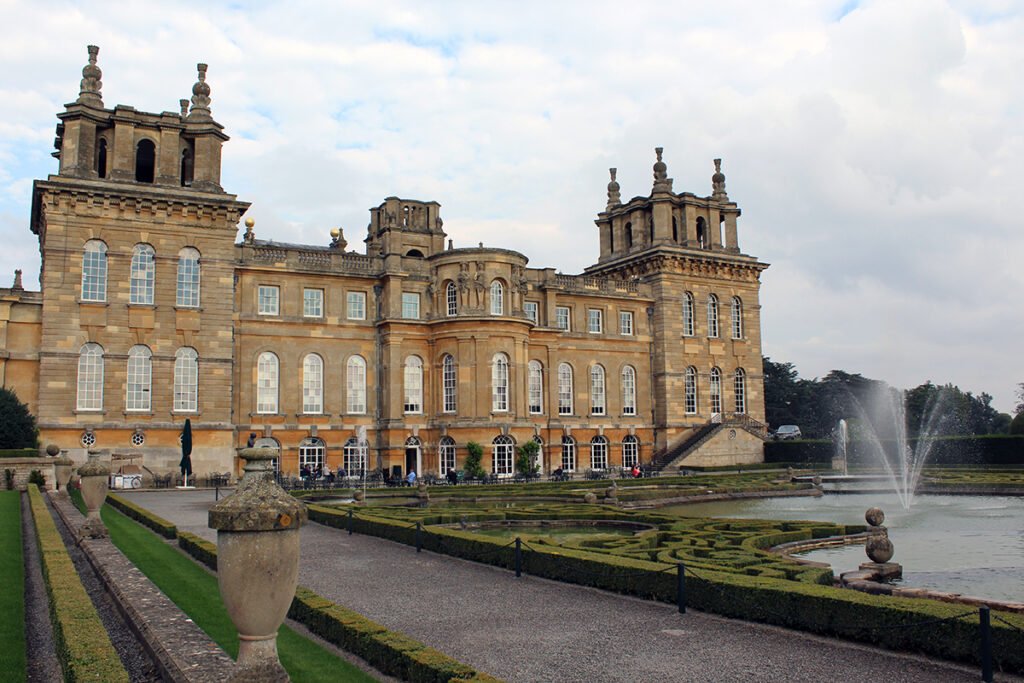
📍 Oxfordshire, England
🕰️ Early 18th century
Built as a gift to John Churchill, the Duke of Marlborough, Blenheim Palace stands as England’s grandest example of Baroque architecture. It’s not only a UNESCO World Heritage Site but also the birthplace of Sir Winston Churchill. The vast estate blends formal gardens, sweeping parklands by Capability Brown, and richly decorated interiors that reflect centuries of British heritage.
✨ Why it’s special: Blenheim is the only non-royal, non-episcopal palace in England. Its mix of monumental design and political symbolism makes it one of the most fascinating UNESCO sites in Europe.
🧭 Travel Tip: Visit in late spring when the grounds are filled with wildflowers. Don’t miss the guided palace tour — the Churchill Exhibition offers an intimate glimpse into British history.
💬 Want to plan your visit? Find opening times, special exhibitions, and event details on the palace’s official site: Blenheim Palace Official Website.
4. Alhambra (Spain)
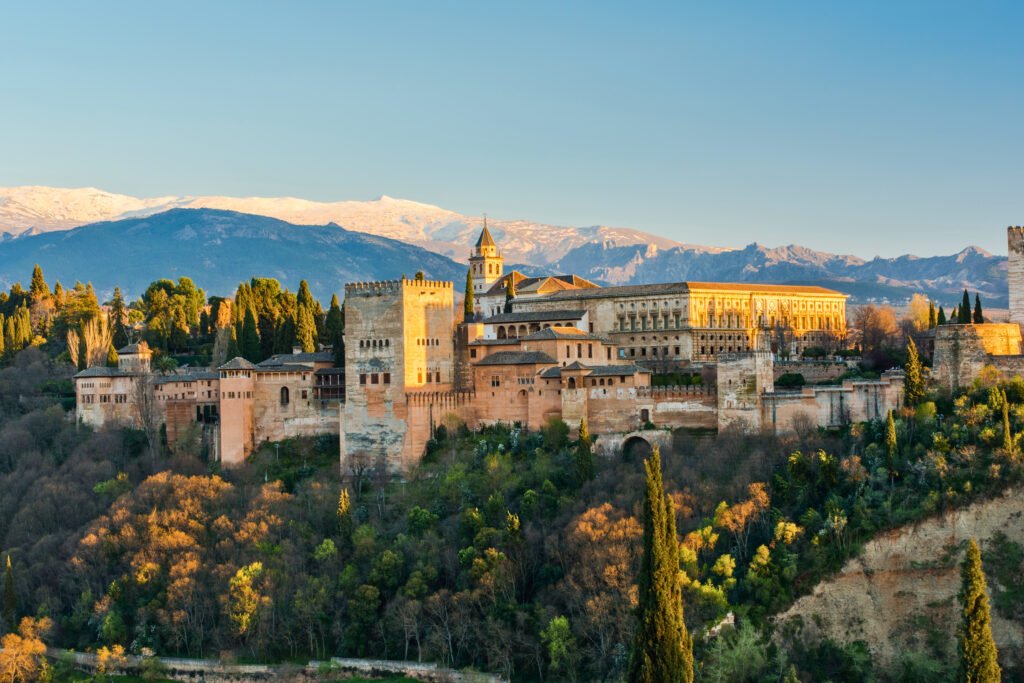
📍 Granada, Andalusia
🕰️ 13th–14th centuries
Rising from a hill overlooking Granada, the Alhambra is more than a castle — it’s a masterpiece of Islamic art and architecture. With ornate arches, poetic inscriptions, and serene courtyards, it tells the story of Al-Andalus, where Muslim, Christian, and Jewish cultures once intertwined.
✨ Why it’s special: The Alhambra is a symbol of coexistence and craftsmanship, its intricate stucco work and mosaic tiles representing the pinnacle of Moorish design. UNESCO calls it a “pearl set in emeralds” — and it’s easy to see why.
🧭 Travel Tip: Book a late-afternoon slot for soft golden light in the Court of the Lions. Don’t rush — the Alhambra deserves to be savored slowly, like poetry written in stone.
💬 Want more insights? Uncover the legends, architecture, and essential visiting tips in our in-depth feature: The Alhambra in Granada, Spain.
5. Prague Castle (Czech Republic)
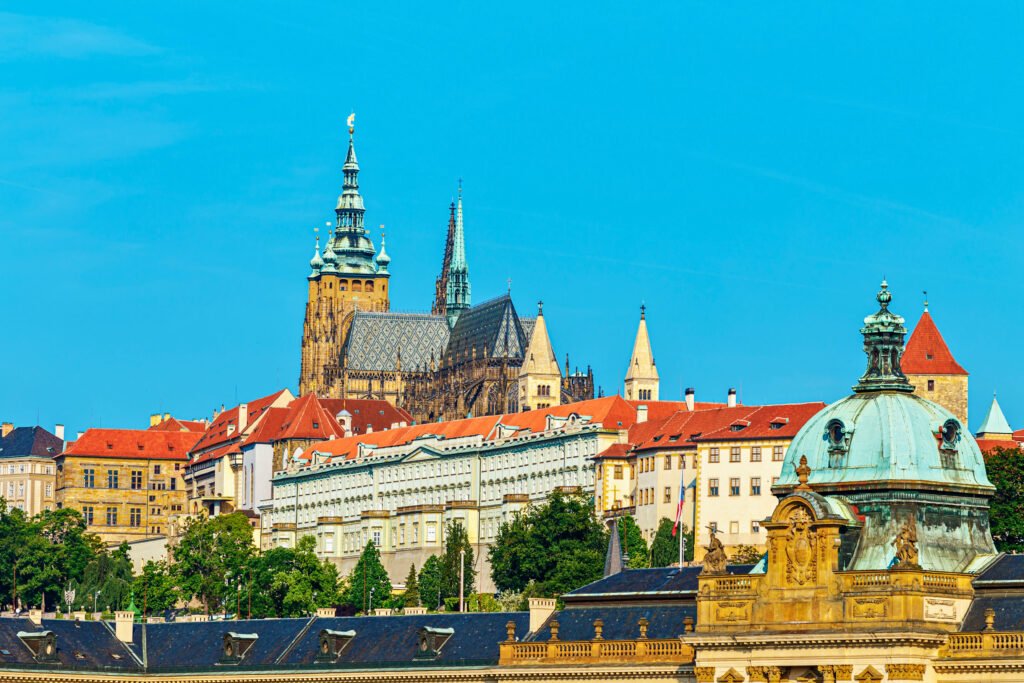
📍 Prague, Czech Republic
🕰️ 9th century
Guarding the Vltava River, Prague Castle is the beating heart of Czech history. Once home to kings, emperors, and presidents, it remains one of the largest castle complexes in the world. Its mix of Gothic spires, Baroque halls, and Romanesque foundations mirrors Prague’s own layered identity.
✨ Why it’s special: The castle complex, part of the UNESCO-listed Historic Centre of Prague, captures nearly every major architectural style of the last millennium. Inside, St. Vitus Cathedral rises like a Gothic dream.
🧭 Travel Tip: Arrive before 9 AM to wander the cobbled courtyards in peace. Stay until evening to see the castle illuminated — a view best admired from Charles Bridge.
💬 Want to plan your visit? Get maps, insider tips, and the full story of Bohemia’s royal stronghold in our complete guide: Prague Castle Travel Guide.
6. Château de Chambord (France)
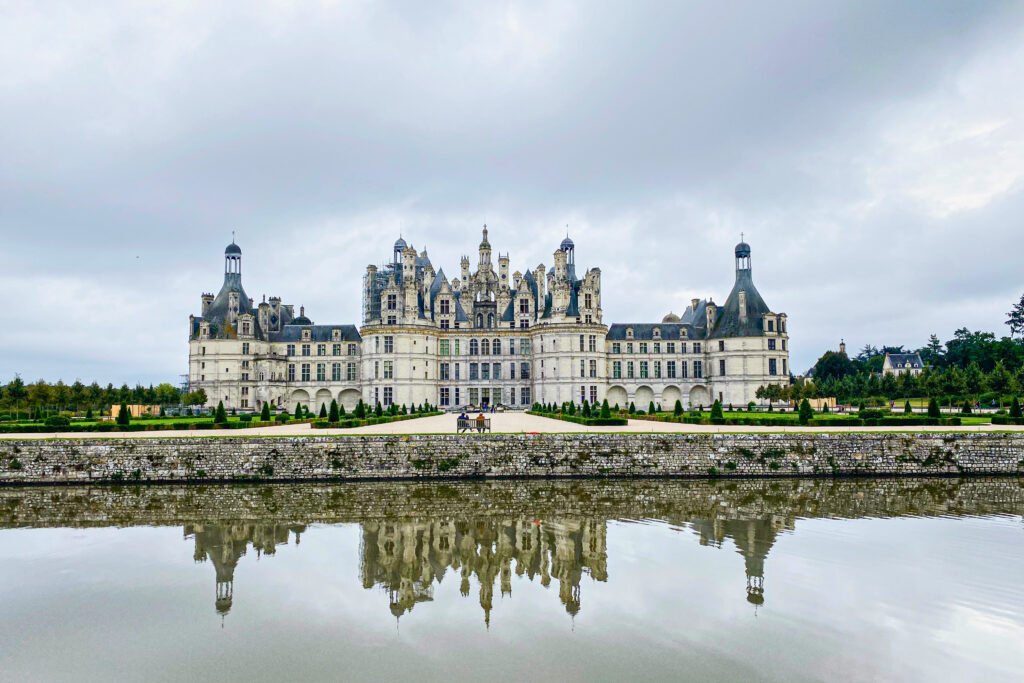
📍 Loire Valley, France
🕰️ 16th century
Chambord is France at its most extravagant. Built by King Francis I as a hunting lodge, this Renaissance marvel fuses Italian elegance with French flair. Leonardo da Vinci even influenced its famous double-helix staircase.
✨ Why it’s special: As part of the Loire Valley UNESCO listing, Chambord represents the peak of royal ambition and architectural experimentation. Its symmetry, towers, and sprawling estate symbolize the glory of Renaissance France.
🧭 Travel Tip: Visit at sunrise for soft mist over the moat. You can rent a bike to explore the surrounding park — it’s the largest enclosed forest in Europe.
💬 Want the full royal story? Dive into the history, design secrets, and visiting tips in our detailed guide: Château de Chambord, France Guide.
7. Edinburgh Castle (Scotland)

📍 Edinburgh, Scotland
🕰️ 12th century
Perched atop Castle Rock, Edinburgh Castle dominates Scotland’s capital. Once a royal residence and fortress, it now anchors the UNESCO-listed Old and New Towns of Edinburgh. Its cannons, stone walls, and panoramic views tell stories of sieges, monarchs, and resilience.
✨ Why it’s special: The castle embodies Scotland’s national spirit — a blend of pride, defiance, and endurance. Inside lies the Crown Jewels and the Stone of Destiny, used for centuries in coronations.
🧭 Travel Tip: Go early or late to avoid crowds, and stay for the One O’Clock Gun tradition. For a cinematic view, climb Calton Hill at sunset.
💬 Planning your trip to Scotland? Discover royal stories, must-see highlights, and the best visiting tips in our full guide: Edinburgh Castle, Scotland Guide.
8. San Juan National Historic Site (Puerto Rico, USA)
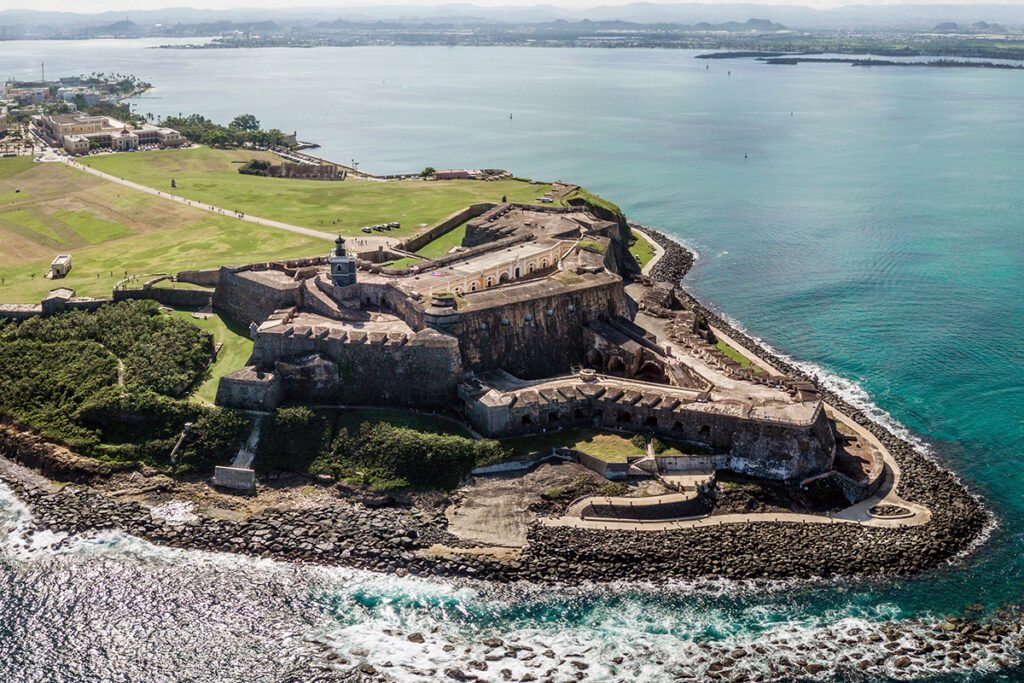
📍 San Juan, Puerto Rico
🕰️ 16th–18th centuries
Guarding the Caribbean entrance to the New World, San Juan’s fortifications are among the finest examples of Spanish colonial defense. The complex includes El Morro, San Cristóbal, and La Fortaleza — a trio of UNESCO-listed structures that once protected Spain’s empire from pirates and rival fleets.
✨ Why it’s special: The San Juan National Historic Site represents centuries of cultural blending and engineering innovation. From the sentry boxes (garitas) to the sweeping ocean views, it’s a place where history and tropical beauty collide.
🧭 Travel Tip: Stroll along the Paseo del Morro at sunset for incredible ocean views. Inside the forts, look for exhibits explaining how life unfolded for soldiers stationed here.
💬 Planning a visit? Check current hours, entry fees, and visitor updates directly from the National Park Service: San Juan National Historic Site – Official NPS Page.
9. Pena Palace (Portugal)
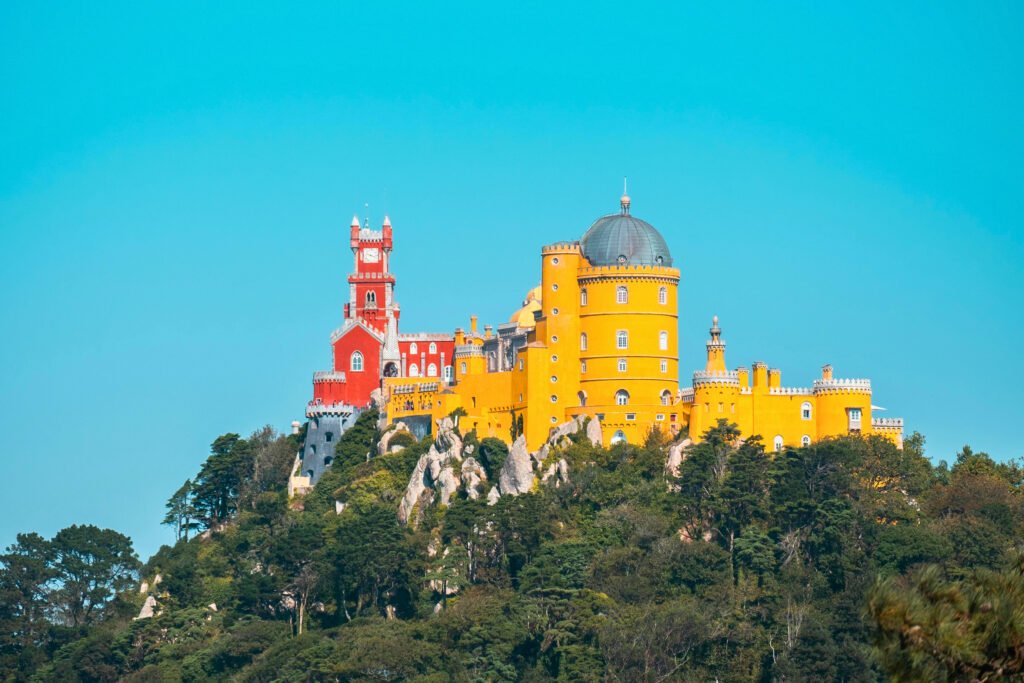
📍 Sintra, Portugal
🕰️ 19th century
Straight out of a storybook, Pena Palace crowns the hills of Sintra with candy-colored domes and romantic turrets. Commissioned by King Ferdinand II, it blends Gothic, Moorish, and Renaissance elements into a joyful architectural collage.
✨ Why it’s special: Part of the UNESCO-listed Cultural Landscape of Sintra, Pena Palace celebrates imagination itself — a riot of color and creativity that rewrote what a royal retreat could be.
🧭 Travel Tip: Go early morning or late afternoon to avoid tour bus crowds. Take the shuttle to the top, but walk down through the lush park trails for secret viewpoints.
💬 Want to plan the perfect Sintra day trip? Discover the history, best photography angles, and local insider tips in our full guide: Pena Palace, Portugal Guide.
10. Krak des Chevaliers (Syria)

📍 Homs Governorate, Syria
🕰️ 11th–13th centuries
This Crusader fortress, often called the most perfectly preserved medieval castle in the world, towers above the Syrian countryside. Built by the Knights Hospitaller, it served as a key stronghold during the Crusades.
✨ Why it’s special: UNESCO hails Krak des Chevaliers as the epitome of medieval military architecture — a masterpiece of defense and strategy that influenced fort design for centuries.
🧭 Travel Tip: While access remains limited, travelers can view the fortress from nearby vantage points. Its silhouette against the desert horizon remains unforgettable — a ghost of chivalry past.
💬 Curious about its Crusader origins? Learn more about its architecture, battles, and preservation efforts on Wikipedia’s Krak des Chevaliers page.
11. Carcassonne (France)
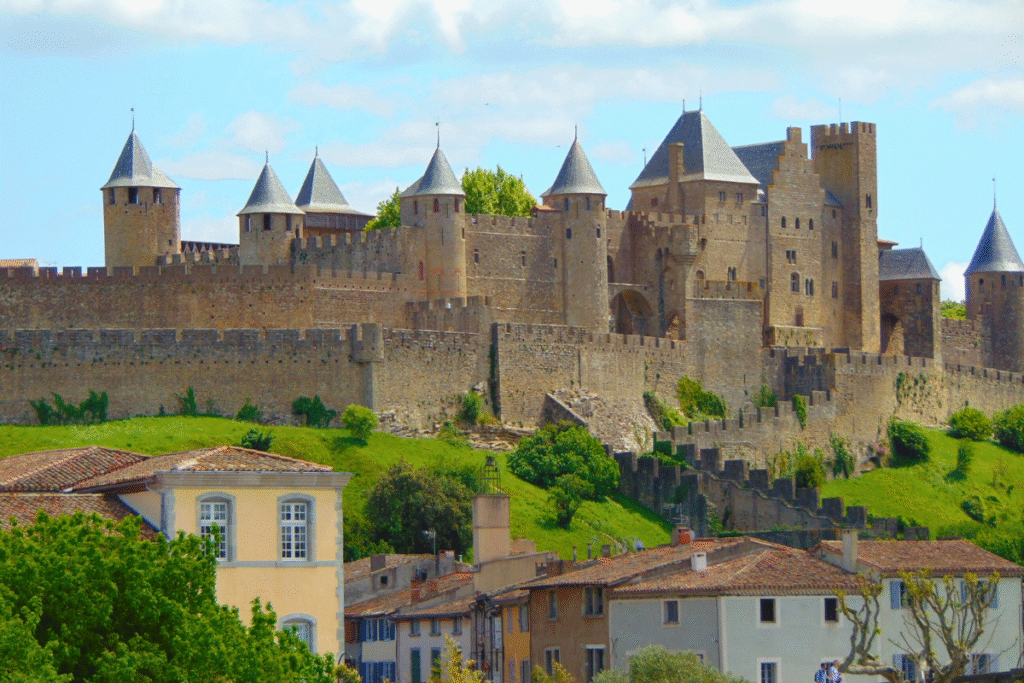
📍 Occitanie, France
🕰️ 12th–13th centuries
If ever a place looked plucked from a medieval legend, it’s Carcassonne. Enclosed by double ramparts and studded with 52 towers, this fortified city feels like stepping into the pages of a knight’s tale. Once a stronghold during the Cathar wars, it later became a symbol of France’s medieval revival.
✨ Why it’s special: Carcassonne is one of Europe’s most complete fortified cities and a shining example of UNESCO’s commitment to preserving living history. Its restoration by architect Viollet-le-Duc in the 19th century turned it into a model of conservation.
🧭 Travel Tip: Visit at dusk when the ramparts glow under golden light. Walk the outer walls for sweeping views of the Aude River Valley, and stay overnight inside the citadel for the full medieval experience.
💬 Want to explore deeper? Discover legends, must-see sights, and the best walking routes in our complete guide: Carcassonne, France Travel Guide.
12. Buda Castle (Hungary)

📍 Budapest, Hungary
🕰️ 13th century
Overlooking the Danube, Buda Castle crowns the UNESCO-listed Banks of the Danube and Buda Castle District. Once home to Hungarian kings, the complex blends Gothic, Baroque, and Renaissance influences, each era adding its own flourish to the skyline.
✨ Why it’s special: Buda Castle is more than a palace — it’s the heart of Hungary’s history and resilience. Destroyed and rebuilt multiple times, it mirrors the spirit of Budapest itself: elegant, enduring, and ever-evolving.
🧭 Travel Tip: Take the funicular up for postcard views, then stay for sunset. The castle’s terraces offer one of Europe’s most romantic panoramas, especially when the Chain Bridge lights up below.
💬 Planning your Budapest trip? Explore royal history, top attractions, and photography tips in our full guide: Buda Castle, Hungary Travel Guide.
13. Sighișoara Citadel (Romania)
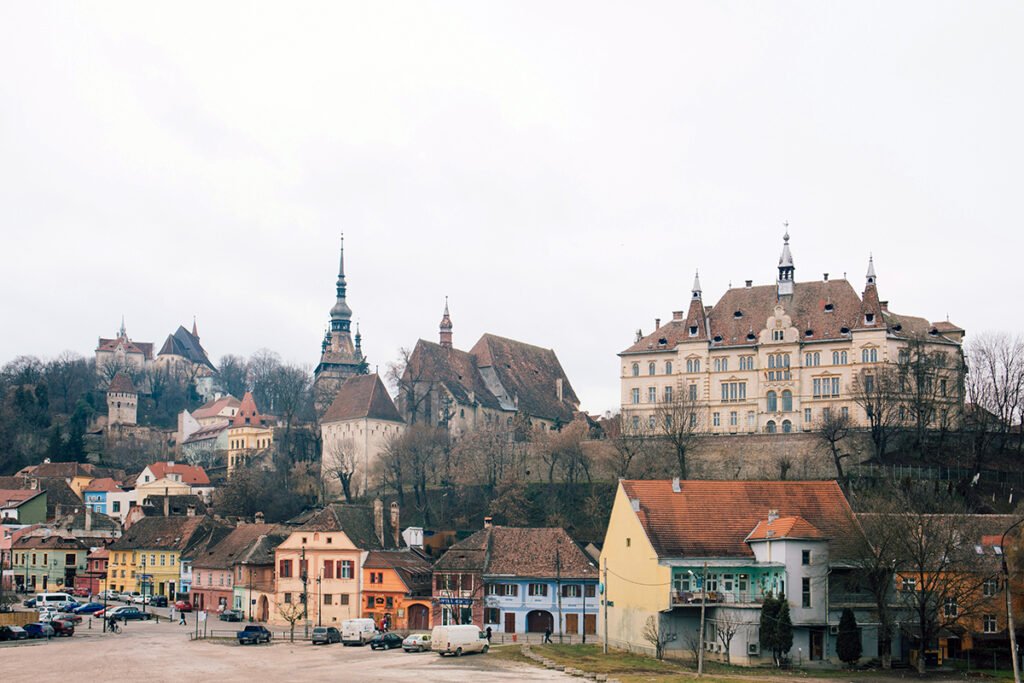
📍 Sighișoara, Transylvania, Romania
🕰️ 12th century
Perched high above the Târnava River, Sighișoara Citadel is one of Europe’s best-preserved medieval fortress towns. Within its UNESCO-listed walls, pastel-colored houses line narrow cobbled streets, and each tower once belonged to a local guild. It’s also the birthplace of Vlad the Impaler, the historical figure who inspired the Dracula legend.
✨ Why it’s special: Unlike many castles that are now empty relics, Sighișoara remains alive — a functioning town that embodies medieval life and craftsmanship. Its authenticity and charm make it one of Romania’s brightest UNESCO jewels.
🧭 Travel Tip: Time your visit for the summer Medieval Festival, when minstrels, artisans, and dancers bring the citadel back to its 14th-century glory.
💬 Need more history and practical info? Find the history of Sighișoara, accommodation tips, transport details, and event listings on Romania Tourism’s Sighișoara page.
14. Tower of London (England)
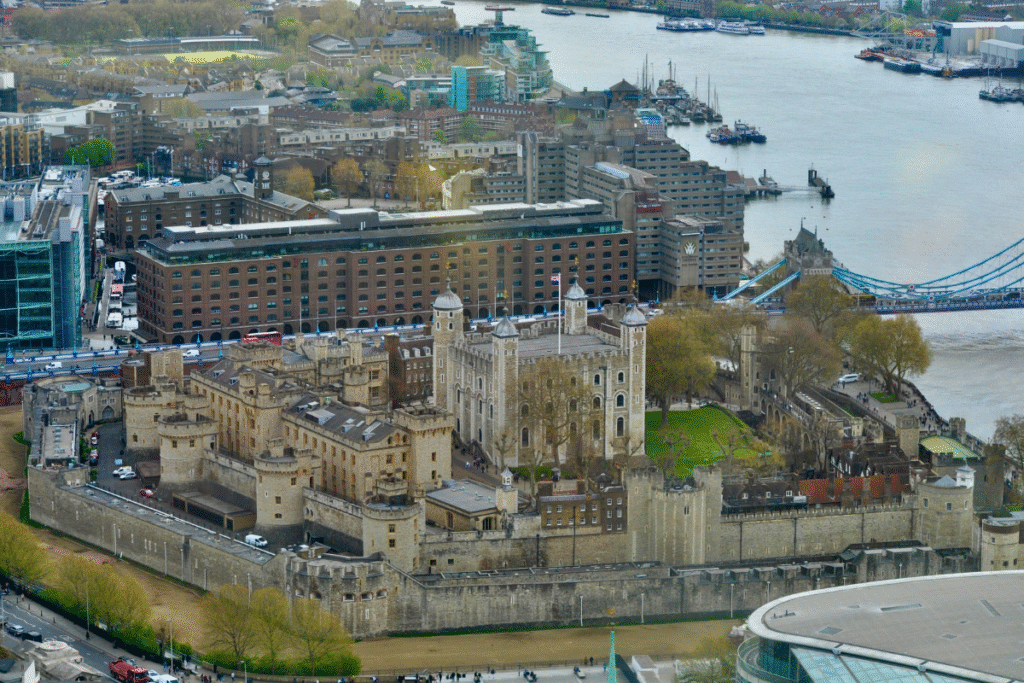
📍 London, England
🕰️ 11th century
Built by William the Conqueror in 1078, the Tower of London has been many things: fortress, palace, prison, and treasury. Its walls have held kings and traitors alike, and today, it guards the dazzling Crown Jewels.
✨ Why it’s special: As a UNESCO World Heritage Site, the Tower represents nearly a millennium of English history — from medieval intrigue to modern monarchy. Every stone breathes with drama.
🧭 Travel Tip: Join the Yeoman Warder (Beefeater) tour for fascinating tales told with British wit. Visit right at opening time to admire the jewels before the crowds.
💬 Want official visitor info? Check entry times, ticket options, and special exhibitions directly from Historic Royal Palaces – Tower of London.
15. Malbork Castle (Poland)
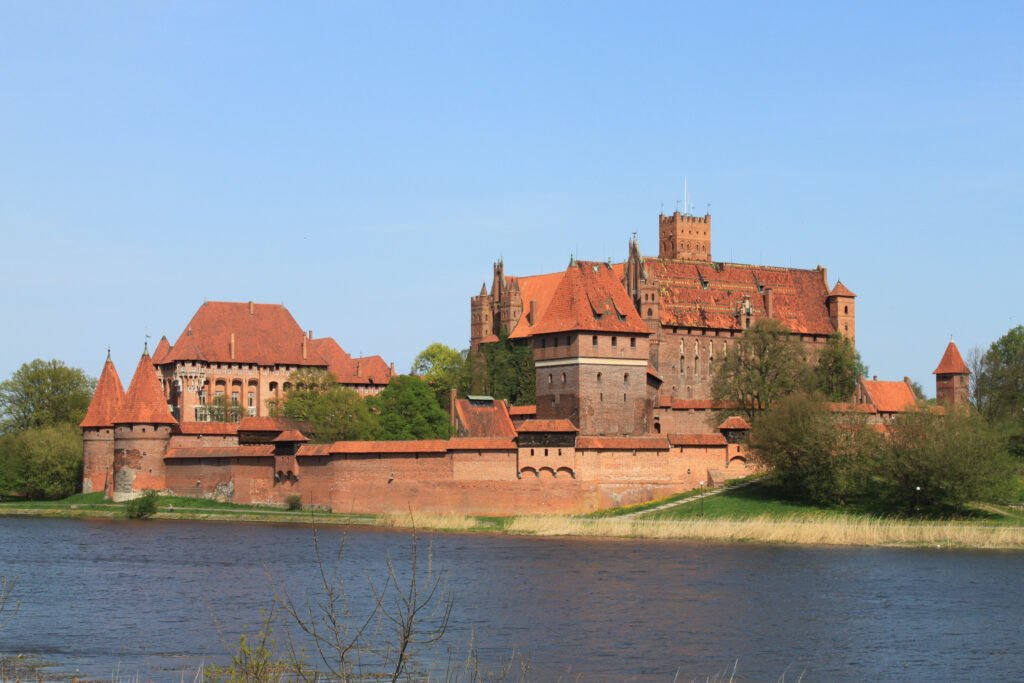
📍 Malbork, Poland
🕰️ 13th century
The mighty red-brick fortress of Malbork stands as Europe’s largest castle by land area. Built by the Teutonic Knights, it was both a monastery and a military bastion, showcasing the height of medieval brick architecture.
✨ Why it’s special: Malbork is a UNESCO masterpiece of Gothic design and a testament to the monastic-military orders that shaped medieval Europe. Its restoration after World War II is a symbol of cultural resilience.
🧭 Travel Tip: Allow at least half a day — the complex is enormous. Summer brings evening sound-and-light shows that animate its dramatic past.
💬 Want to plan your visit? Explore the full history, restoration story, and must-see highlights in our detailed guide: Malbork Castle Travel Guide.
16. Castillo San Felipe de Barajas (Colombia)
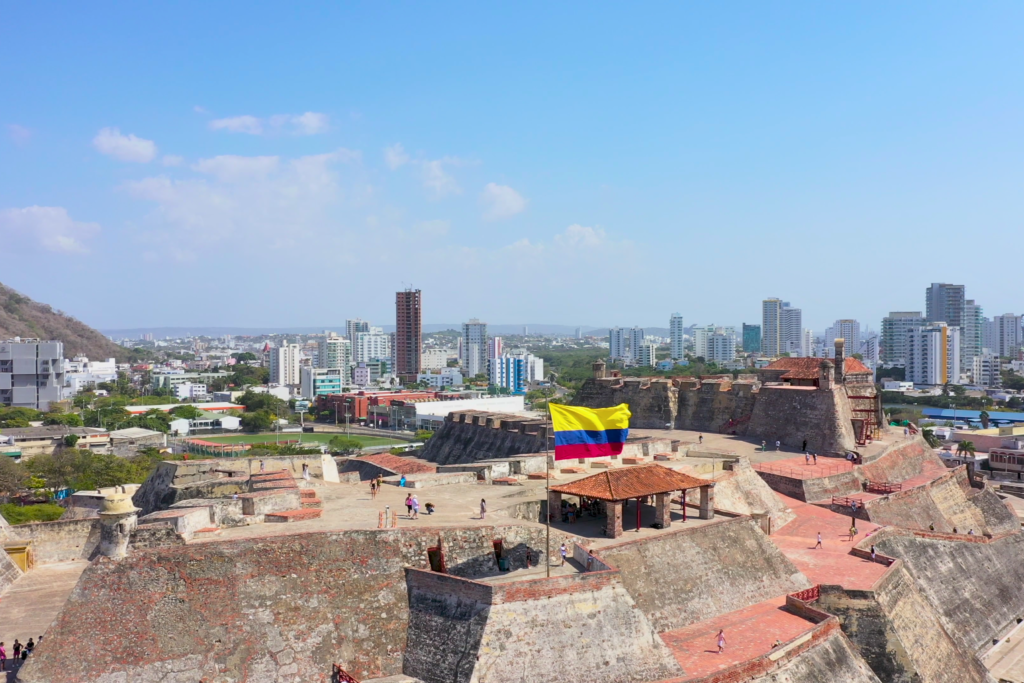
📍 Cartagena, Colombia
🕰️ 17th century
Guarding the Caribbean coast, this imposing fortress was Spain’s strongest stronghold in the Americas. Its maze-like tunnels, ramparts, and cannon batteries were designed to repel pirates and invading fleets — and they did, brilliantly.
✨ Why it’s special: Part of Cartagena’s UNESCO-listed walled city, Castillo San Felipe symbolizes colonial ambition and ingenious engineering. It’s one of the most powerful examples of New World fortifications.
🧭 Travel Tip: Go early morning to beat the heat. Climb to the top for panoramic views of Cartagena’s old town, where pastel balconies spill with flowers.
💬 Want to explore this Caribbean fortress in depth? Discover its history, tunnels, and travel tips in our full guide: Castillo San Felipe de Barajas, Cartagena.
17. Schönbrunn Palace (Austria)
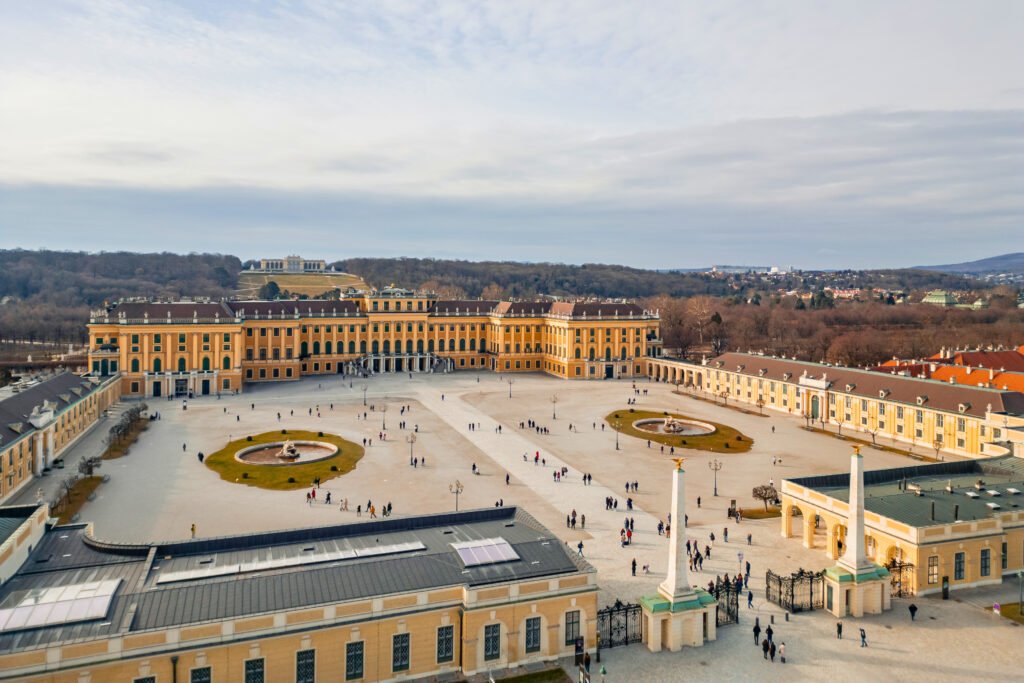
📍 Vienna, Austria
🕰️ 17th–18th centuries
Once the summer residence of the Habsburg emperors, Schönbrunn is a dazzling Baroque masterpiece surrounded by immaculate gardens. Inside, opulent rooms echo with the footsteps of emperors, composers, and courtiers.
✨ Why it’s special: This UNESCO-listed palace embodies Austria’s imperial era, blending architecture, art, and landscape design into a harmonious whole. Mozart himself performed here at age six.
🧭 Travel Tip: Buy the Grand Tour ticket for access to the most ornate rooms. Climb the Gloriette hill for sweeping city views — especially magical at sunset.
💬 Planning a Vienna visit? Dive into imperial history, architectural highlights, and insider tips in our complete guide: Schönbrunn Palace, Vienna Guide.
18. Mont Saint-Michel (France)
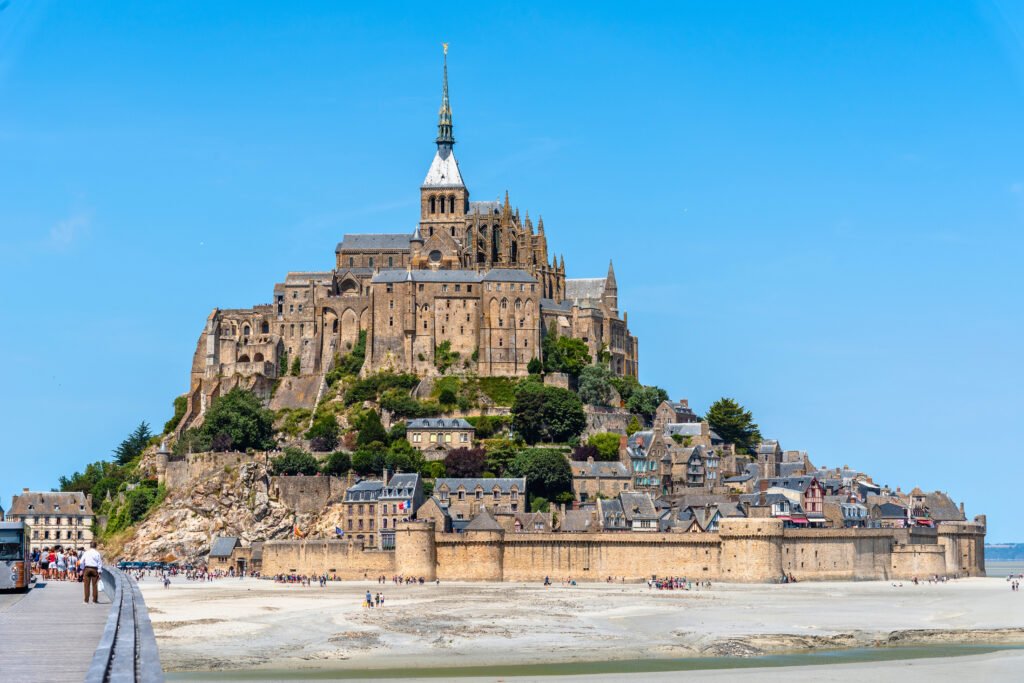
📍 Normandy, France
🕰️ 8th–13th centuries
Rising from tidal sands like a vision, Mont Saint-Michel is one of France’s most breathtaking sights. This fortified abbey-turned-village sits atop a rocky island, encircled by shimmering tides that transform it from land to sea.
✨ Why it’s special: UNESCO calls it “a masterpiece of human creative genius.” Its Gothic spires and gravity-defying construction showcase faith, determination, and medieval engineering at their finest.
🧭 Travel Tip: Check tide schedules — the island is most magical when surrounded by water. Stay overnight nearby to enjoy the peace after the day-trippers depart.
💬 Want to experience the magic fully? Explore the abbey’s history, legends, and best visiting tips in our full feature: Mont Saint-Michel, France Guide.
19. Sigiriya (Sri Lanka)
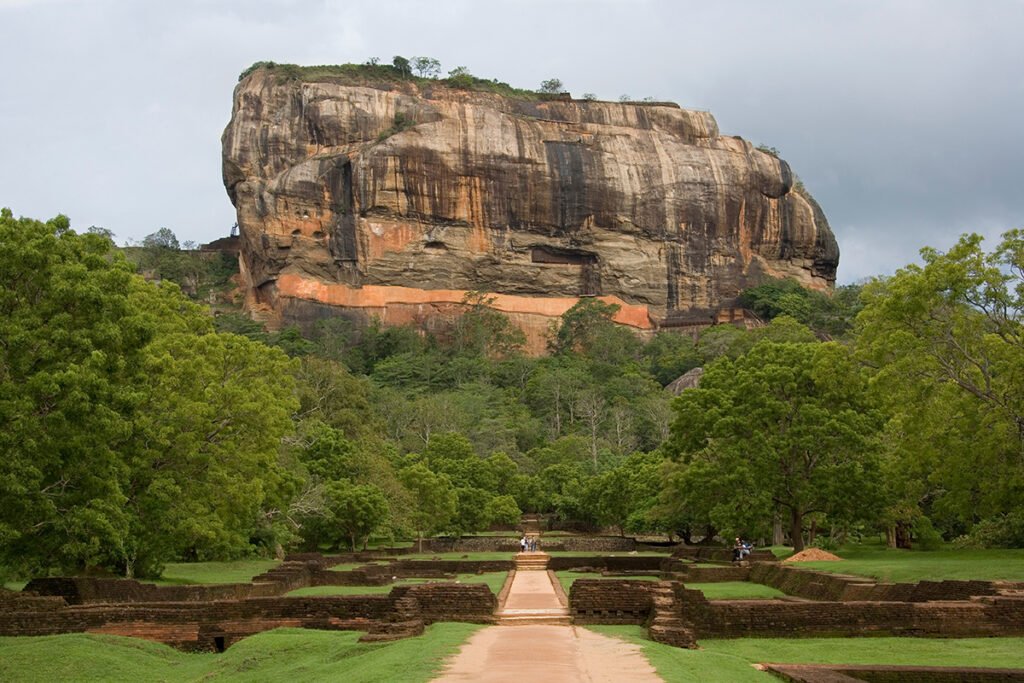
📍 Central Province, Sri Lanka
🕰️ 5th century
Sigiriya, the “Lion Rock,” rises 200 meters above lush jungle, crowned by the ruins of an ancient citadel. Built by King Kashyapa, this fortress-palace is famous for its mirror wall, frescoes, and monumental lion gateway carved from stone.
✨ Why it’s special: A marvel of urban planning and art, Sigiriya is a UNESCO cultural treasure blending natural beauty and human ingenuity. Its water gardens and frescoes reveal a civilization of remarkable sophistication.
🧭 Travel Tip: Start your climb early to avoid the heat. The view from the summit — endless green and ancient history at your feet — is unforgettable.
💬 For visitor information and local insights, check out Sigiriya Fortress Official Site for details on opening hours, ticket prices, and travel updates.
20. Agra Fort (India)
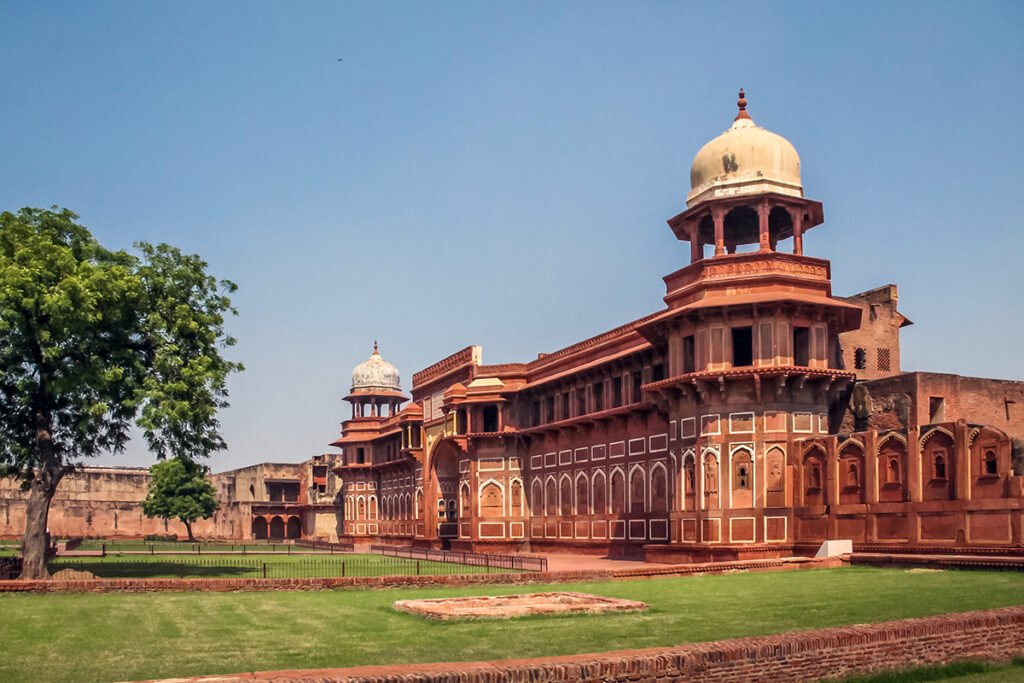
📍 Agra, Uttar Pradesh, India
🕰️ 16th century
A stone’s throw from the Taj Mahal, Agra Fort was the seat of Mughal power before the capital moved to Delhi. Its towering red sandstone walls encircle marble palaces, courtyards, and mosques, all rich with intricate detail and imperial elegance.
✨ Why it’s special: Recognized by UNESCO as the finest example of Mughal fort architecture, Agra Fort tells the story of an empire’s rise through art and stone. Shah Jahan, who built the Taj Mahal, was later imprisoned here by his own son — with only a distant view of his masterpiece.
🧭 Travel Tip: Visit near sunset for a golden hue on the fort’s walls. Take a guided tour for the best insights into Mughal history and artistry.
💬 Official Info: For visiting hours, ticket details, and heritage facts, check the Archaeological Survey of India’s official Agra Fort page.

Quick-Reference Table: UNESCO World Heritage Castles
| 🏰 Castle Name | 🌍 Country | 🗓️ Year of Inscription | ☀️ Best Time to Visit | 🏅 UNESCO Type |
|---|---|---|---|---|
| Neuschwanstein Castle | Germany | 2019 (as part of Bavarian heritage sites) | April–October | Cultural |
| Himeji Castle | Japan | 1993 | March–April (cherry blossom season) | Cultural |
| Blenheim Palace | England, UK | 1987 | May–September | Cultural |
| Alhambra | Spain | 1984 | April–June, September–October | Cultural |
| Prague Castle | Czech Republic | 1992 | April–October | Cultural |
| Château de Chambord | France | 2000 (Loire Valley) | April–October | Cultural |
| Edinburgh Castle | Scotland | 1995 (Old and New Towns) | May–September | Cultural |
| San Juan National Historic Site | Puerto Rico (USA) | 1983 | November–April | Cultural |
| Pena Palace | Portugal | 1995 (Cultural Landscape of Sintra) | March–June, September–October | Cultural |
| Krak des Chevaliers | Syria | 2006 | March–May, October–November | Cultural |
| Carcassonne | France | 1997 | April–September | Cultural |
| Buda Castle | Hungary | 1987 (Banks of the Danube) | May–September | Cultural |
| Sighișoara Citadel | Romania | 1999 | May–October | Cultural |
| Tower of London | England | 1988 | April–October | Cultural |
| Malbork Castle | Poland | 1997 | May–September | Cultural |
| Castillo San Felipe de Barajas | Colombia | 1984 (Walled City of Cartagena) | December–April | Cultural |
| Schönbrunn Palace | Austria | 1996 | April–October | Cultural |
| Mont Saint-Michel | France | 1979 | April–June, September | Cultural |
| Sigiriya | Sri Lanka | 1982 | December–April | Cultural |
| Agra Fort | India | 1983 | October–March | Cultural |

Planning Tips for Visiting UNESCO World Heritage Castles
Exploring UNESCO World Heritage Castles is like flipping through a living history book — but with better views. To make the most of your travels, here are a few practical tips from castle-hopping veterans.
🕰️ Timing Matters
Most castles are best visited between April and October, when the weather is pleasant and the gardens are in bloom. If you prefer fewer crowds, shoulder seasons — April-May or September-October — are ideal. In winter, castles like Neuschwanstein or Himeji take on a magical, snow-dusted charm, though opening hours can be shorter.
🎟️ Tickets & Passes
Book online whenever possible, especially for high-demand sites like the Alhambra, Pena Palace, and Blenheim Palace. Some countries, like France and Germany, offer regional passes (such as the Loire Valley Pass or Bavarian Castles Pass) that save time and money if you plan to visit multiple sites.
📸 Photography Tips
Lighting can make or break your castle photos. For dramatic shots, aim for golden hour — just after sunrise or before sunset. Bring a lightweight tripod for interiors, and remember: some sites (like Himeji or Blenheim Palace) restrict flash or tripods indoors.
🚆 Getting Around
Europe’s rail network connects many UNESCO castles easily — think Prague, Vienna, or Paris. In Asia, Japan’s Shinkansen trains and Sri Lanka’s scenic railways make castle travel smooth and scenic. Renting a car offers freedom in places like Portugal’s Sintra or France’s Loire Valley.
👣 Go Beyond the Walls
Some of the best castle experiences happen just outside. Hike around Mont Saint-Michel at low tide, sip Tokaji wine overlooking Buda Castle, or wander the artisan markets beneath Sighișoara’s pastel towers. Castles often anchor entire cultural landscapes — exploring nearby villages reveals another layer of history.
💡 Insider Tip:
UNESCO’s official website lists every inscribed castle and palace worldwide. Use it to plan your next trip — you might find a fortress you’ve never heard of waiting to surprise you.

Final Thoughts
Castles are more than remnants of a bygone age — they’re storytellers made of stone. From Japan’s pristine Himeji Castle to Puerto Rico’s oceanfront San Juan fortress, each UNESCO World Heritage Castle captures a different chapter of humanity’s saga: power, art, faith, ambition, and survival.
Standing before these monuments, you feel small — but connected. The same curiosity that drove ancient builders to carve fortresses into cliffs or float abbeys above the sea still drives us to travel today. Visiting these castles isn’t just sightseeing; it’s witnessing the endurance of human imagination.
So whether you’re tracing fairytale towers in Bavaria, wandering moonlit courtyards in Granada, or watching sunset over Agra’s red sandstone ramparts, one truth remains — history never stands still. It breathes through these walls, waiting for you to listen.
👉 Ready to keep exploring? Dive into our feature on The Alcázar of Segovia — a Spanish icon that inspired Disney itself — or wander through our 10 Best Castles to Visit in Italy for a mix of medieval might and fairytale beauty. Each one comes with stories, legends, and travel tips you’ll want to bookmark.
🏰✨ Thanks for reading! If you enjoyed this castle journey, come along for more. Follow CastleQuest Chronicles on Instagram, Facebook, Pinterest, YouTube, TikTok, and X for daily castle inspiration and behind-the-scenes stories. You can also browse all our latest features and guides here. More castles — and more incredible tales — are always on the way.

